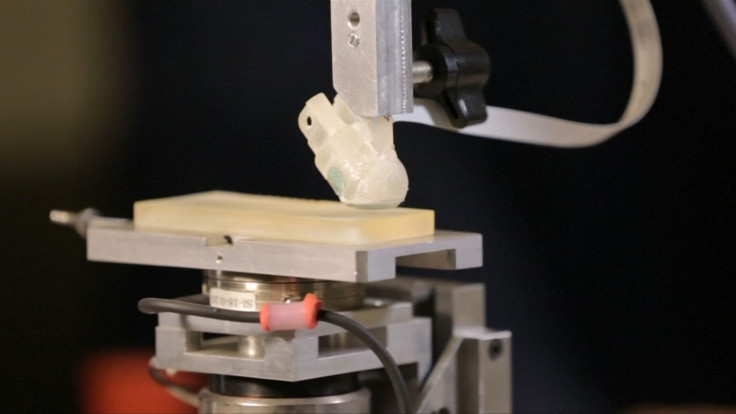Bionic Fingertip Gives Sense Of Touch To Amputee [Video]

An amputee is able to feel rough or smooth textures in real-time using an artificial fingertip connected to nerves in his upper arm. Matthew Stock reports.
Attached to a machine is a bionic fingertip. Attached to the other end is amputee Dennis Sørensen.
Electrodes implanted into his nerves are relaying in real-time the sensations of the artificialfingertip.
In this case, the feeling of a rough or smooth surface.
"When the scientists stimulate my nerves I could feel the vibration and the sense of touch in my phantom index finger," Sørensen said. "I could tell the difference between the way it was very rough and smooth."
The research is published this week in the scientific journal eLife.
The scientists behind it say their artificial fingertip delivers a superior level of touch resolution compared to other neural prosthetics.
Silvestro Micera, Associate Professor at EPFL (Ecole Polytechnique Federale de Lausanne) said, "We showed that it is possible to deliver to amputees a very sophisticated part of the sense oftouch which is texture discrimination. It is possible to achieve this thanks to electrodes surgically implanted into the peripheral nervous system of the subject."
Sørensen was able to distinguish between rough and smooth surfaces 96 percent of the time.
The same experiment was conducted with non-amputees - with electrodes temporarily implanted into the nerves through the skin.
By looking at their brainwaves, researchers concluded that the same parts of the brain were activated by the feeling from the real and artificial fingertips.
It demonstrates that the needle-like electrodes relay information about texture in much the same way as implants.
This revelation means doctors could more easily trial new neural prosthetics on test subjects before implantation into amputees.
© Copyright Thomson Reuters 2024. All rights reserved.











